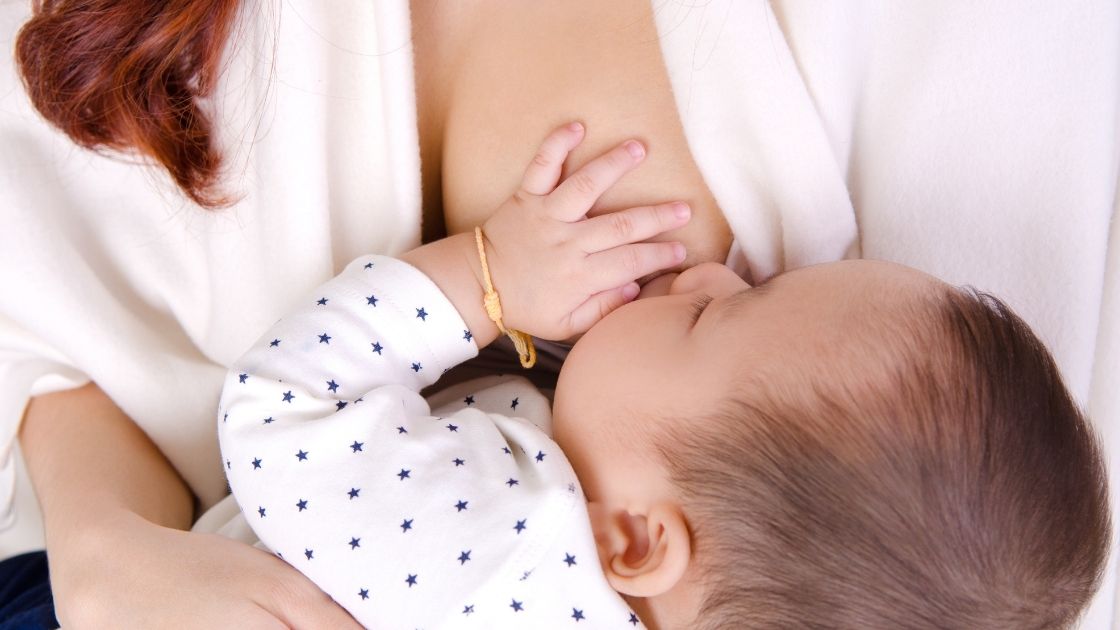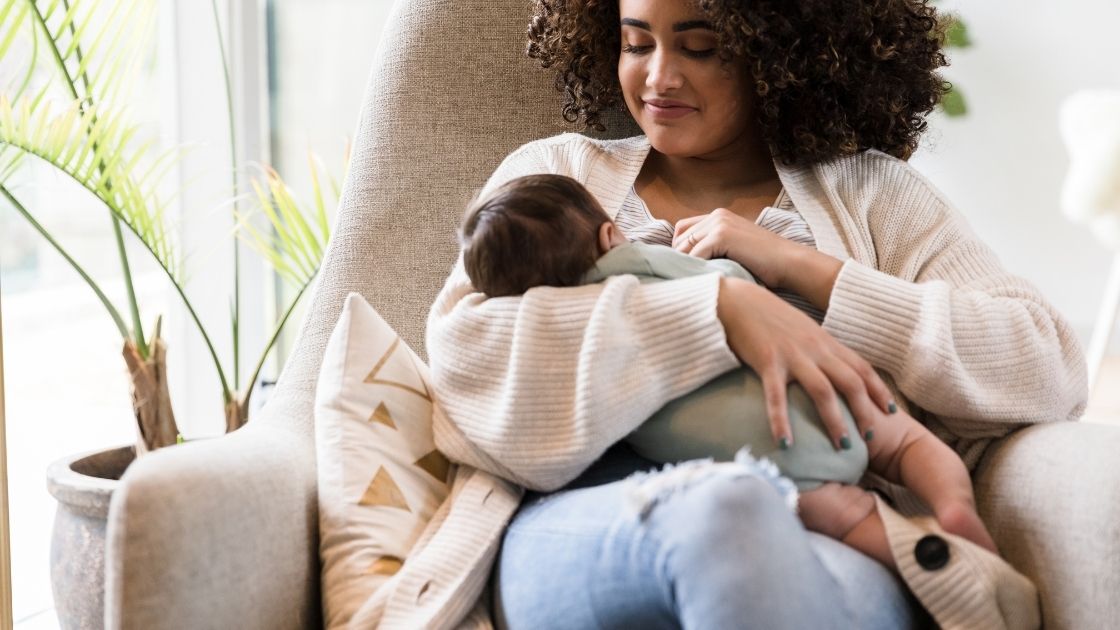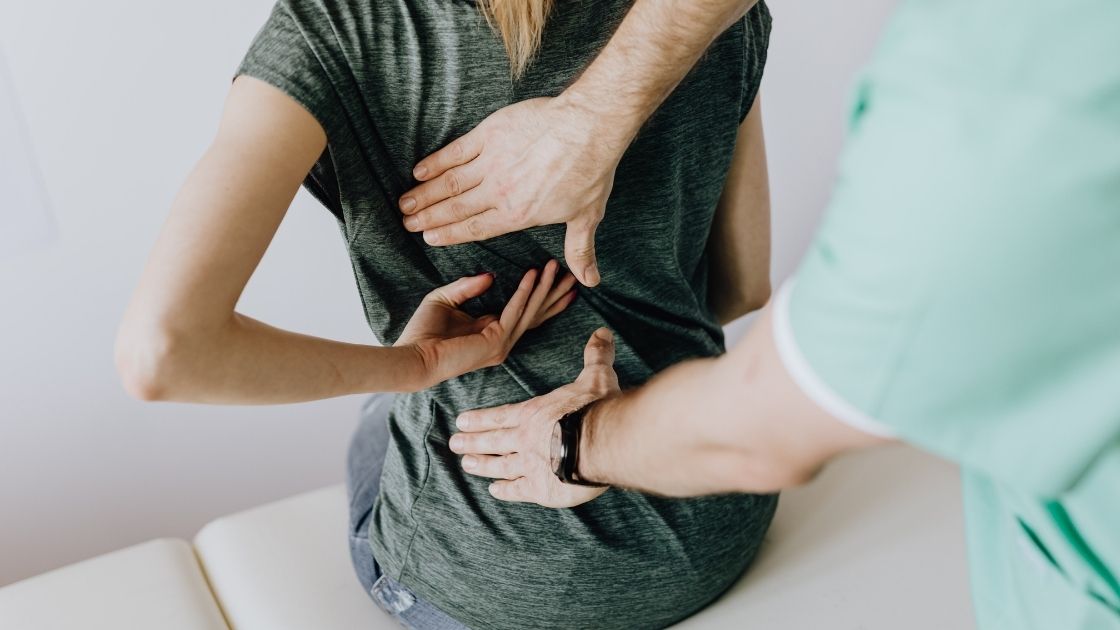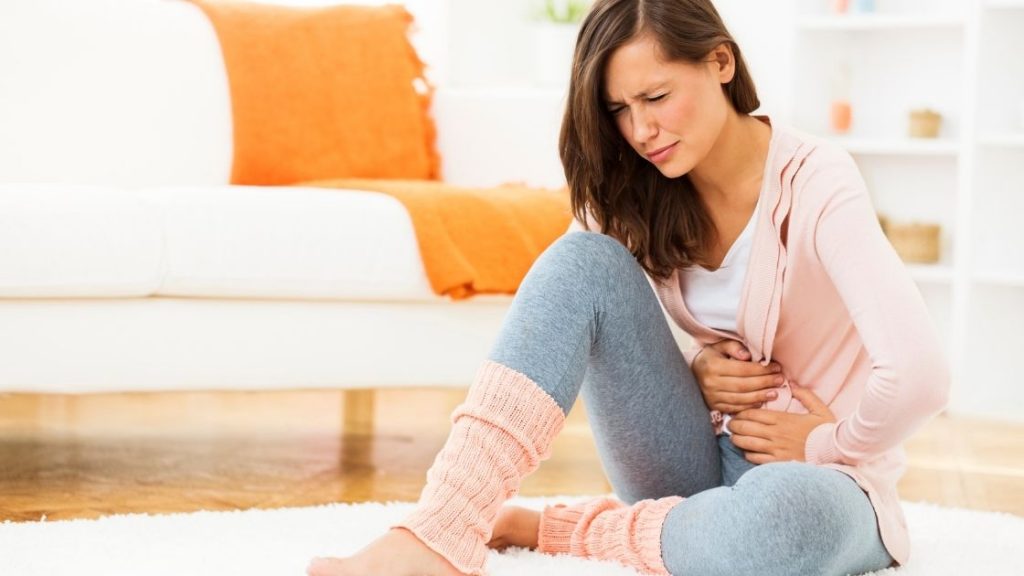For women, pregnancy and motherhood are sacred and irreplaceable vocations.
However, to achieve boundless happiness when welcoming the baby, the mother's body also has to expend energy and change. Both mother and baby can experience problems in the first six weeks after birth.
The act of breastfeeding is a beautiful and sacred bond. However, sometimes this is not always pleasant or comfortable because you may experience some cramps and lower back pain while breastfeeding.
Although this phenomenon is widespread, if there is no remedy, the condition will worsen over time.
In this article, we will explain why many mothers have cramps and lower back pain while breastfeeding and solutions to minimize these problems.
Okay, let’s dive in!
Causes Of Cramps And Lower Back Pain While Breastfeeding

Why do women have cramps while breastfeeding?
Cramps are also known as uterine afterbirth pains, or simply understood as the result of your uterus contracting to help it return to its original size before giving birth. This process is called involution.
Uterine pain after childbirth is usually mild for first-time mothers and does not last long. But these symptoms can be quite bothersome after the second birth and often worsen with each subsequent birth.
That's because first-time moms tend to have better uterine muscles, which means the uterus can contract and retract more than the uterus stretching and contracting intermittently, leading to postnatal cramps.
Cramps will be most intense during the first day or two after birth, but they should subside around the third day. However, it may take six weeks or so for your uterus to return to its normal size.
Breastfeeding can make cramping symptoms worse or make them more intense because breastfeeding triggers the release of the hormone oxytocin, which in turn causes contractions.
However, breastfeeding is a good thing as breastfeeding cramps help your uterus shrink to its normal size faster, reducing the risk of postpartum anemia caused by blood loss.
Why do women have lower back pain after giving birth?
Back pain is not a problem that can go away overnight, it can last a long time, depending on each person.
Many moms experience lower back pain in the second trimester and it continues for a few months after giving birth.
The main culprit behind postpartum back pain is hormones. The body normally releases progesterone and relaxin during pregnancy to help relax the ligaments and joints of the pelvis or make it easier for the baby to be delivered during labor. Because these hormones can persist for a long time, they can easily lead to back pain.
The labor process also plays a part in your postpartum back pain. If you choose to give birth vaginally while pushing, many muscles will begin to feel overloaded and tight.
The lack of sleep due to having to take care of the baby, bending over, and holding the child up makes the back area suffer a lot.
Incorrect breastfeeding posture will also stress the lower back muscles, causing back pain. This is one of the most common reasons for new moms, especially first-time moms.
9 Ways To Relieve Cramps And Lower Back Pain While Breastfeeding
Here are some tips to help limit cramps and lower back pain while breastfeeding that you can refer to.
Pay attention to the breastfeeding posture

Wrong breastfeeding posture is the most common cause of back pain and cramps. There are a lot of unwitting mothers who can do so.
You should not lean forward or let your body loose. It has also been found that many women feel uncomfortable with certain breastfeeding positions.
Therefore, try breastfeeding in different positions to find the most suitable and comfortable position.
Comfortable breastfeeding positions that you should adopt:
Use cushions or nursing pillow
Occasionally, you will find yourself leaning slightly forward to make it easier for your baby to breastfeed. However, this can put a lot of pressure on your back.
Instead, use pillows under your baby's back and bottom to bring his/her closer to your breasts. Also, use a back pillow when breastfeeding.
I have a guide on how to find the best nursing pillow here.
Use the right type of chair
If you sit in a chair to feed your baby, another important thing is to choose the right type of chair. Avoid sitting in a deeply cushioned chair because it will easily cause back pain. Instead, choose a sturdy chair and sit in an upright position.
Walk for pain relief
Walking is very effective in strengthening the muscles in your back as well as your chest. No matter how busy taking care of a baby is, you should still try to set aside at least 15 minutes a day for a walk.
Daily walking will help your muscles to be active and relaxed. From there, it will improve cramps and back pain when breastfeeding.
Make sure you check out my guide on all the super fast self-care tips that you can do in less than 5 minutes a day.
Rest at the same time as the baby
Getting enough rest after giving birth is of the utmost importance to any mother, especially if you have recently given birth. To get rid of back pain while breastfeeding, take care of yourself.
You should take advantage of a few minutes of naps when your baby sleeps instead of trying to stay awake to do housework because this only makes the pain last or even worse over time.
I've found out that sleeping with a pillow under your knees helps reducing back pain.
Drink lots of water
When engrossed in taking care of newborns, many mothers easily forget their need to drink water. Dehydration not only makes you feel tired and exhausted, but it can also lead to many different types of aches and pains, such as postpartum upper back pain and cramps.
Therefore, you should drink at least 6-8 glasses of water a day to avoid this situation from happening.
Alternating hot and cold compresses
You can take an ice pack, place it on the painful back and cramping area for about 20 minutes, rest for 10 to 15 minutes, and then apply heat. This is a great way to relieve lower back pain and postpartum middle back pain while breastfeeding.
Limit stress
Negative feelings like anger, stress, or even postpartum depression are very common for new mothers. They affect the mind and have a negative impact on health, such as causing back pain or cramps in nursing mothers.
If you find yourself feeling overwhelmed, ask your husband or loved one to help keep an eye on the baby so you can get a little extra rest and do what it takes to feel more comfortable.
Massage and acupressure

After giving birth, the mother should ask for the support of massage and acupressure methods to stimulate blood circulation, effectively dispelling aches and pains. Not only that, but this therapy also works to reduce stress, helping to feel more relaxed.
Mothers can ask relatives for more support or go to postpartum mother care centers at home to perform physical therapy for cases of more pain than usual.
In terms of mechanics, massage and acupressure methods to help the muscles, bones, joints in the back, hips, and other areas relax and be comfortable is a great way to treat back pain in pregnant women and moms.
A few physical therapy movements, massage in the lumbar region, massage in the shoulder and neck area are simple but effective ways to help you relax mentally, dispel aches and pains, and make your body stronger and more comfortable.
Application of physical therapy treatments such as acupuncture, massage, or acupressure should be applied regularly and appropriately.
Besides, it should be combined with supportive exercises such as exercise or yoga to increase the effect and limit the recurrence of painful manifestations after treatment.
Weight loss
During pregnancy, women often have to eat a variety of nutritious foods to take care of the health of both mother and baby. Therefore, many people gain weight quickly and uncontrollably during pregnancy. After giving birth, weight control and getting back in shape is said to be a painful problem for many pregnant women.
Too much body weight is also the cause of back pain, spinal pain, and cramps that many people don't notice. Therefore, after giving birth to a baby, mothers should apply a suitable diet and exercise every day to quickly get in shape to help them be more confident and help reduce cramps and lower back pain.
However, mothers should not be too impatient about losing weight that affects the health of themselves and their babies. It is advisable to consult the doctor about a reasonable diet, increased movement, and gentle exercise to achieve good results.
Frequently Asked Questions
How long do postpartum cramps last?
Thankfully, the pain after giving birth usually doesn't last long. Cramps usually last only two to three days and up to a week after birth with mild intensity.
But if you're dealing with severe pain, there are ways to ease the pain, too. One of them is the option of taking over-the-counter medications. According to Healthyday, doctors recommend non-steroidal anti-inflammatory drugs (NSAIDs) like Motrin, non-acetaminophen like Tylenol, which are usually sufficient for pain relief and are safe to take while breastfeeding.
A heating pad or hot water bottle can be applied to the mother's lower abdomen. It can also help provide comfort for the mother with postpartum cramps.
How long does postpartum back pain usually last?
Most body functions will return to normal after your baby is born. However, unlike other problems, back pain will persist. Some doctors have shared that it takes up to 6 months for your body to settle down and relaxin hormones to subside and make back pain go away.
However, if the mother experiences strenuous physical activity after pregnancy, the back pain may persist for up to 10 or 12 months. In addition, obesity contributes to an increased risk of long-term back pain.
When do you have to see a doctor about postpartum cramps and back pain?
There are times when cramps after giving birth can be a cause for concern. Suppose the cramps don't go away after applying some medications, such as Motrin or Tylenol as recommended by your doctor, and you're still experiencing severe pain. In that case, you should contact a medical professional or go to the hospital to make sure all is well. You should do the same if you notice any unusual discharge or body odor or have a fever.
Final Words
Having to take care of a baby will make it hard for you to notice yourself as much as you used to.
But even so, remember that your health comes first, and if this factor is affected, parenting becomes more difficult. Therefore, balance everything and ask for help when needed.
Postpartum cramps and lower back pain while breastfeeding are part of labor and delivery that can't be avoided.
Taking a little time to exercise each day can give you unexpected benefits. Hopefully, the information provided has helped you know the causes of cramps and back pain while breastfeeding as well as the solutions to improve these problems.
Always keep the above information in mind to promptly handle this unwanted situation.
Thanks for reading our article!

